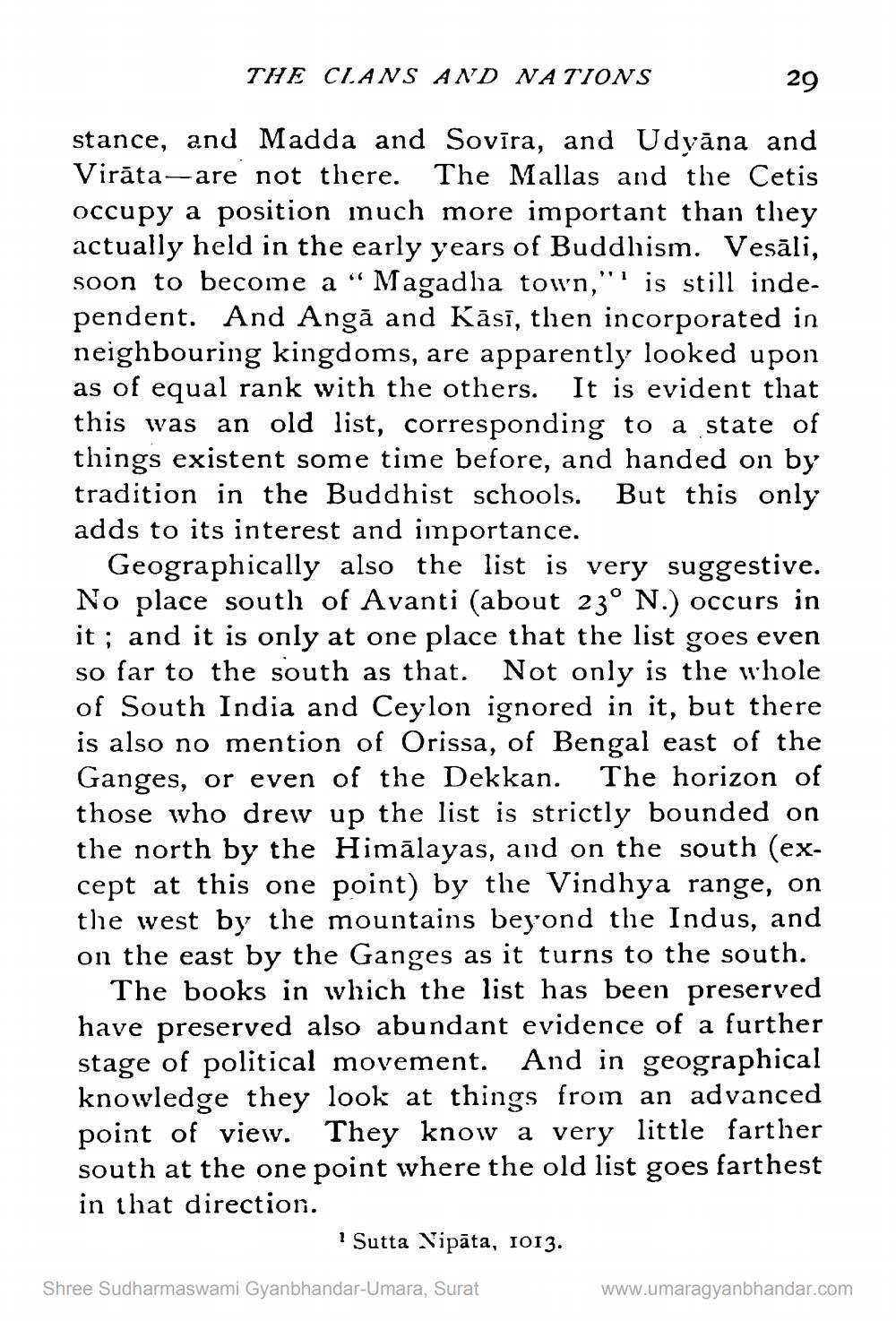________________
THE CLANS AND NATIONS
"
stance, and Madda and Sovīra, and Udyana and Virāta-are not there. The Mallas and the Cetis occupy a position much more important than they actually held in the early years of Buddhism. Vesāli, soon to become a Magadha town," " is still independent. And Angā and Kāsī, then incorporated in neighbouring kingdoms, are apparently looked upon as of equal rank with the others. It is evident that this was an old list, corresponding to a state of things existent some time before, and handed on by tradition in the Buddhist schools. But this only adds to its interest and importance.
Geographically also the list is very suggestive. No place south of Avanti (about 23° N.) occurs in it; and it is only at one place that the list goes even so far to the south as that. Not only is the whole of South India and Ceylon ignored in it, but there is also no mention of Orissa, of Bengal east of the Ganges, or even of the Dekkan. The horizon of those who drew up the list is strictly bounded on the north by the Himalayas, and on the south (except at this one point) by the Vindhya range, on the west by the mountains beyond the Indus, and on the east by the Ganges as it turns to the south.
The books in which the list has been preserved have preserved also abundant evidence of a further stage of political movement. And in geographical knowledge they look at things from an advanced point of view. They know a very little farther south at the one point where the old list goes farthest in that direction.
1 Sutta Nipāta, 1013.
29
Shree Sudharmaswami Gyanbhandar-Umara, Surat
www.umaragyanbhandar.com




